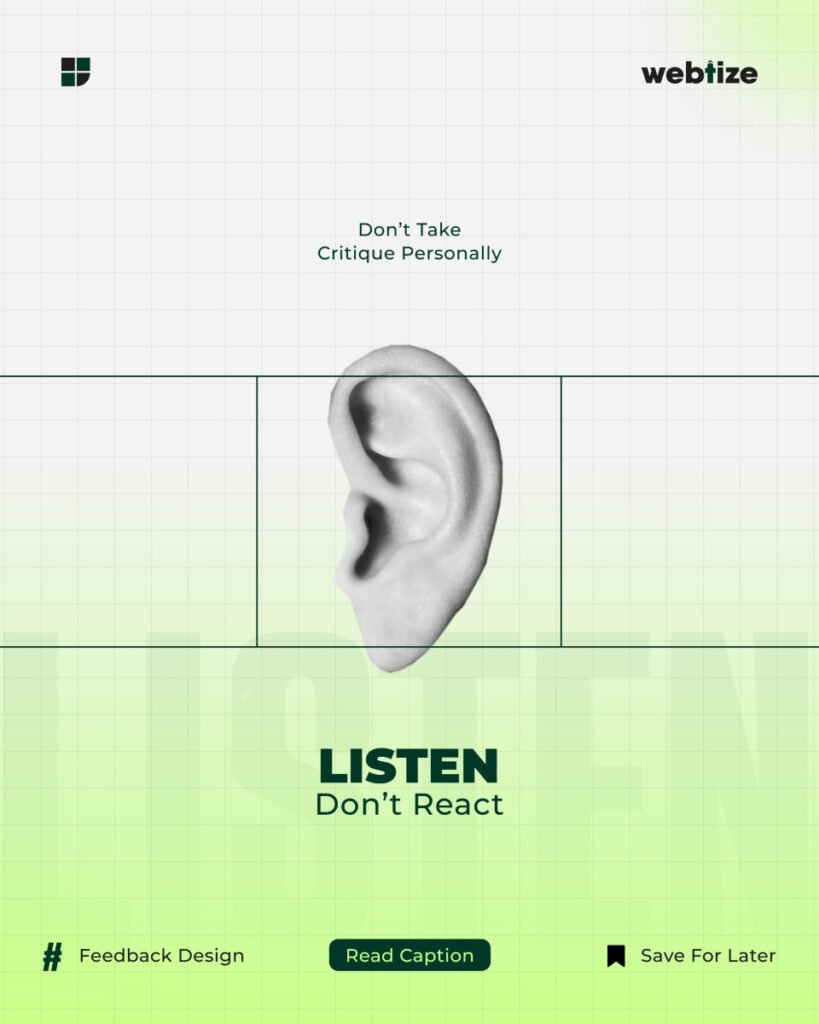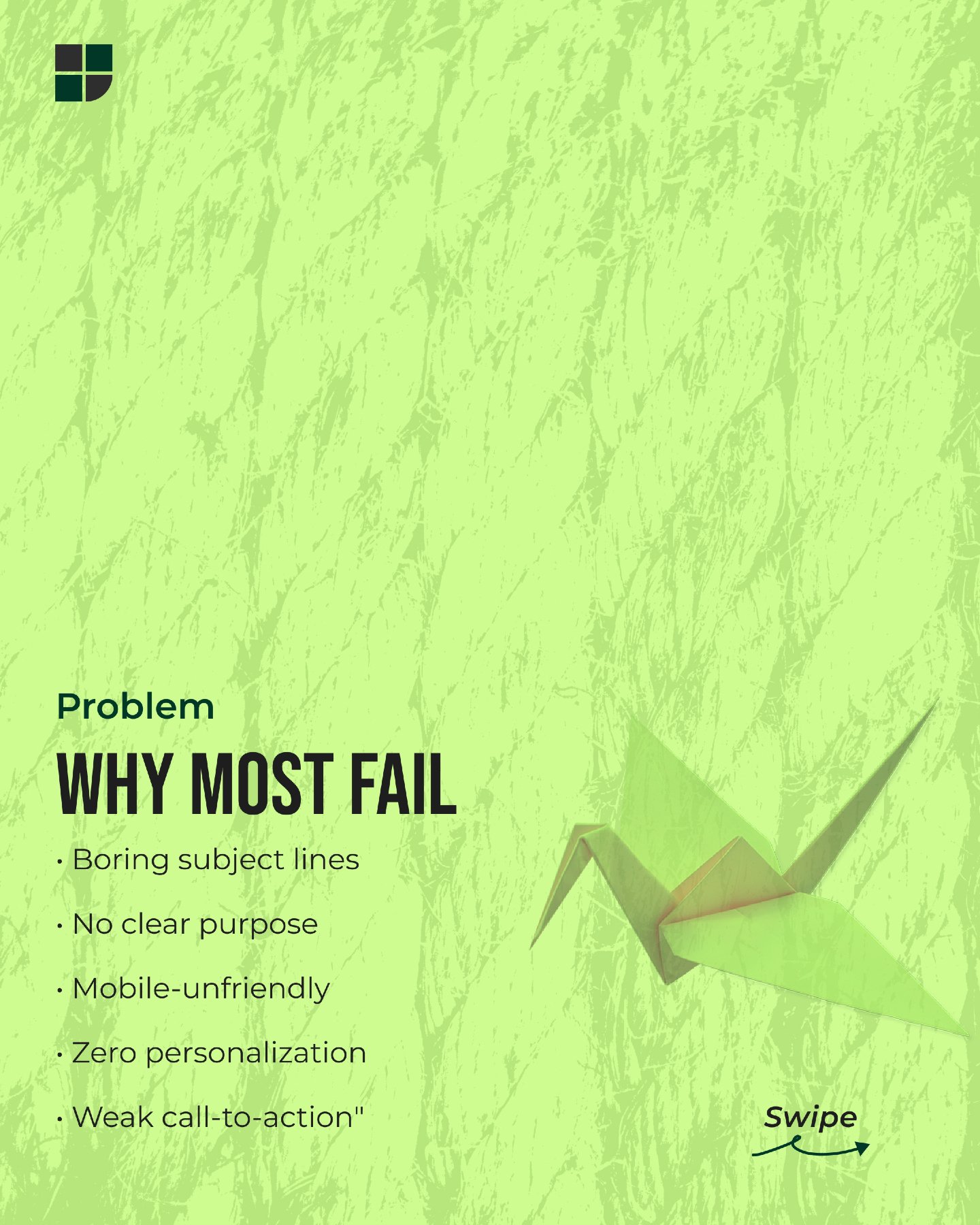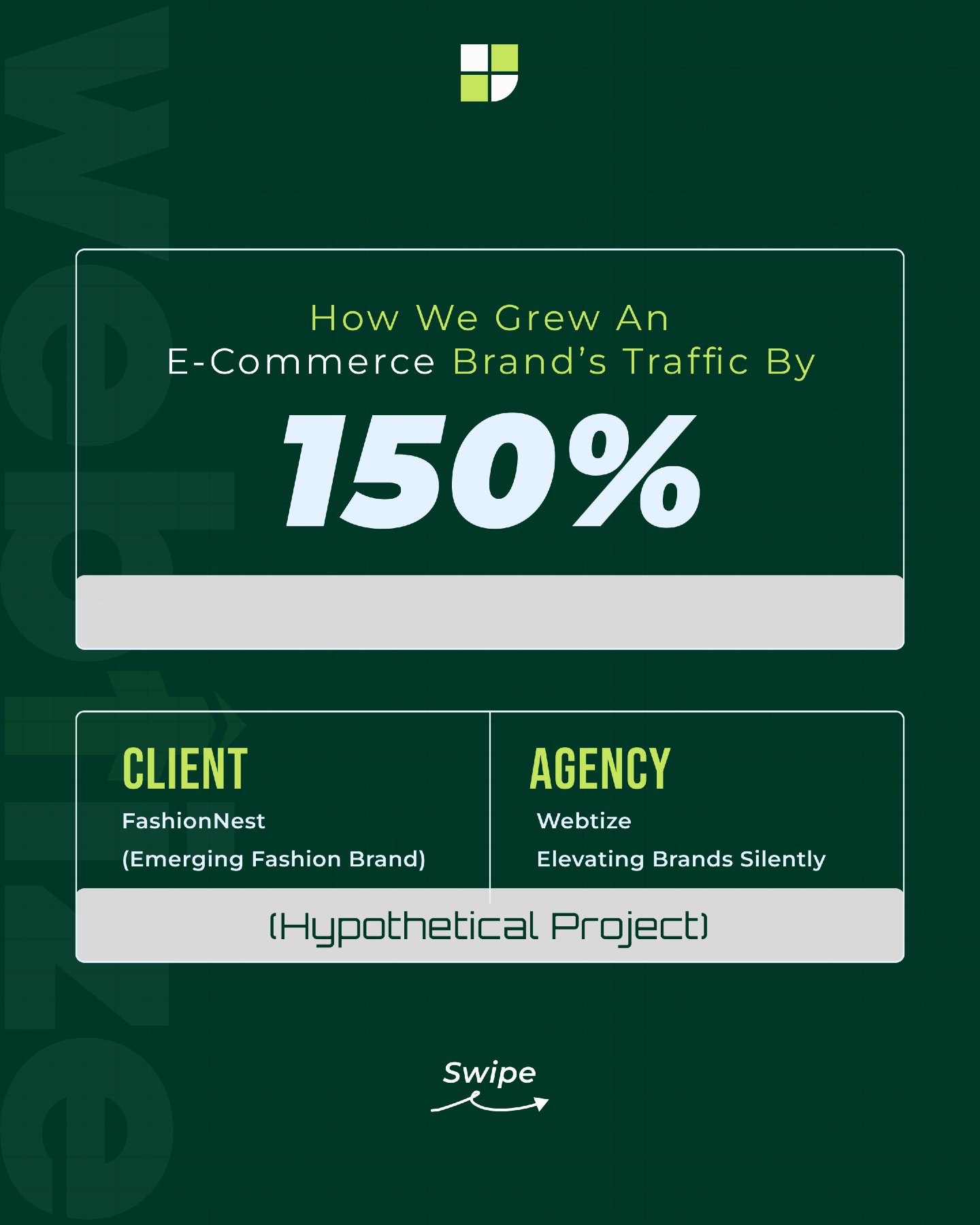Design is more than colors, layouts, and typography. It is communication, and communication always involves feedback. Yet for many designers, feedback feels uncomfortable, even threatening. After all, design work often carries personal pride, late-night revisions, and hours of creative problem-solving.
At Webtize, we work with brands across industries, and one truth has become clear: the designers who grow the fastest are not the ones who defend every choice, but those who learn to listen before reacting. Feedback, when approached correctly, is not criticism. It is a tool for improvement, collaboration, and professional growth.
Why Designers Struggle With Feedback
Most designers experience feedback in two ways:
- Subjective feedback. “I don’t like this color” or “Can you make the logo bigger?” These are opinion-driven and often reflect personal taste.
- Objective feedback. “The text is too small for readability” or “The call-to-action blends with the background.” These are grounded in usability, clarity, and business goals.
The challenge arises when subjective feedback feels personal. Designers may respond defensively, shifting the conversation away from the project and toward ego.
At Webtize, we’ve seen this play out in client projects. The designs that perform best are not the ones protected from feedback, but the ones refined through it.
Why Listening Beats Reacting
When designers react instantly, they often miss the deeper meaning behind feedback. The client might not articulate design principles, but they’re pointing to a feeling or barrier. Listening first allows you to uncover what they truly need.
Listening leads to:
- Clarity. You understand the intention behind the comment.
- Trust. Clients and teammates feel heard.
- Collaboration. The project becomes a shared success, not a battle.
- Improvement. You catch blind spots you couldn’t see yourself.
Defending too quickly shifts focus from solving the problem to protecting the ego. But pausing, asking clarifying questions, and reflecting opens the door to better solutions.
Feedback Isn’t Personal, It’s Professional
Design feedback targets the work, not the designer. Yet it’s natural to feel attached. Recognizing the difference is key.
When you receive feedback, ask:
- Does this align with the project goals?
- Will this change improve the user experience?
- Or is it purely preference-driven?
Learning what to take in and what to leave behind is a skill. At Webtize, our design team uses a filtering process:
- Objective issues get fixed immediately. Accessibility, clarity, alignment, or performance concerns are non-negotiable.
- Subjective comments are considered carefully. If multiple stakeholders share the same preference, it may point to a broader user experience issue.
- Outliers are documented. If a comment doesn’t align with the brief, it is acknowledged respectfully but not always implemented.
The Growth Equation Every Designer Should Know
Here’s the formula that separates good designers from great ones:
Real feedback = Better results
Ego = Worst design partner
Design is not about defending choices at all costs. It is about producing work that communicates effectively, solves problems, and meets client goals.
At Webtize, we’ve seen junior designers accelerate their careers simply by adopting this mindset. When you approach feedback with curiosity instead of resistance, your designs improve and your reputation grows.
Types of Feedback Designers Face
To handle feedback like a professional, it helps to know the types you’ll encounter:
- Constructive feedback. Specific, actionable, and tied to objectives. Example: “The font size feels too small for mobile users.”
- Vague feedback. Unclear statements such as “Something feels off.” Here, it’s your job to ask clarifying questions.
- Contradictory feedback. Two stakeholders suggest opposite directions. In this case, go back to the project goals to guide decisions.
- Personal preference feedback. Subjective input like “I just like blue more.” These should be balanced against user needs and project outcomes.
By categorizing feedback, you avoid overreacting and make thoughtful decisions about which changes will truly strengthen the design.
How to Handle Feedback Like a Pro
At Webtize, our design workflow includes structured steps for processing critique:
- Pause before responding. Give yourself space to absorb the comment.
- Seek clarity. Ask questions like, “Can you describe what feels unclear?”
- Look for patterns. If multiple people raise the same concern, it signals a real issue.
- Evaluate against goals. Compare feedback to the creative brief and business objectives.
- Decide what matters. Separate must-do changes from optional tweaks.
- Apply with intention. Update the design in a way that solves problems, not just to appease.
This process ensures that every piece of feedback is acknowledged, evaluated, and acted on thoughtfully.
Common Designer Pitfalls With Feedback
Many designers fall into traps that damage their credibility:
- Taking everything personally. This makes you defensive instead of collaborative.
- Ignoring all feedback. Dismissing critique makes you seem rigid and uninterested in growth.
- Applying every single comment. This leads to a messy, diluted design that loses focus.
The professional path is balance. Accept valuable feedback, question unclear input, and remain calm even when you disagree.
Final Thought
Feedback is not the enemy of creativity. It is the partner of progress. The sooner designers stop reacting defensively and start listening with intent, the stronger their work becomes.
At Webtize, we believe the best design outcomes happen when ego takes a back seat and real collaboration leads the way.
So the next time you face critique, remember: listen, don’t react. Your designs and your career will thank you






